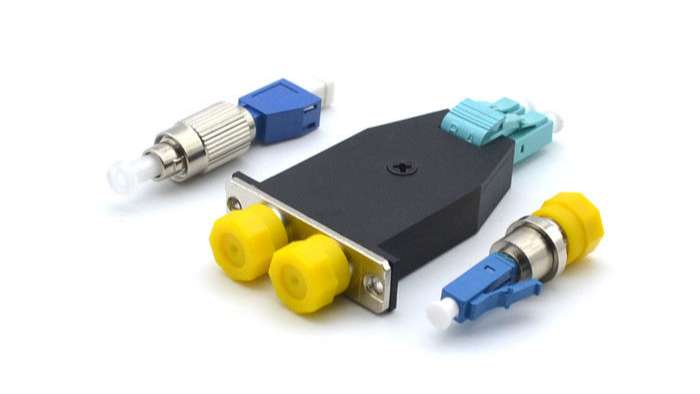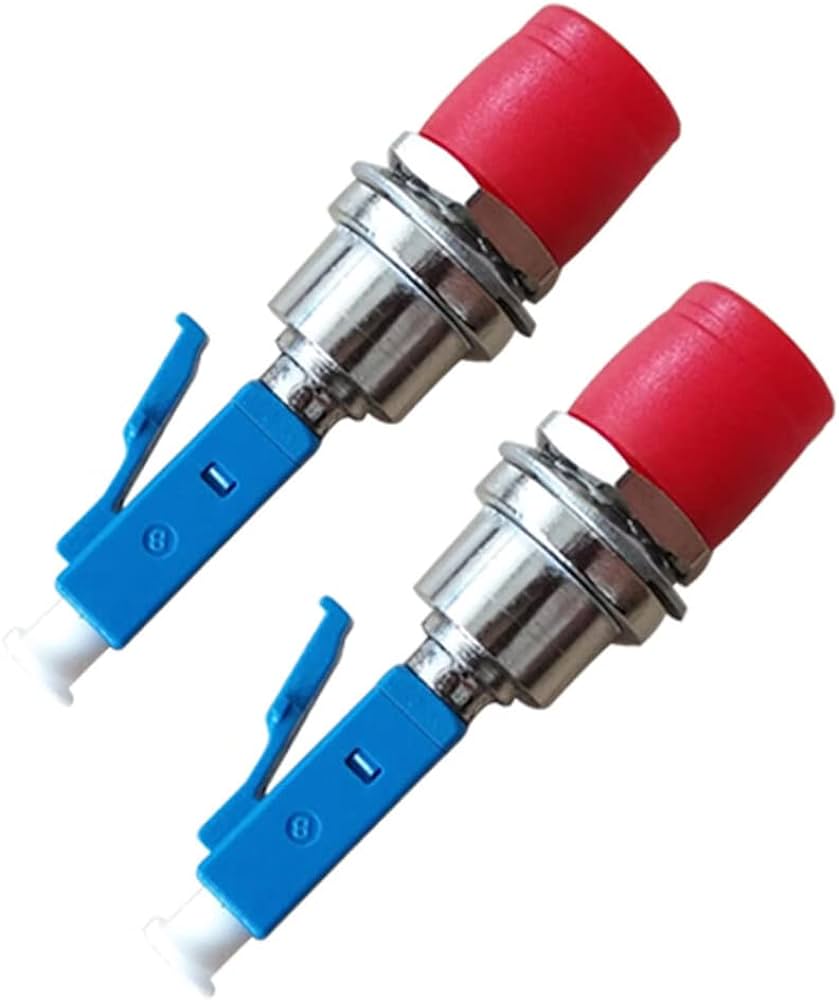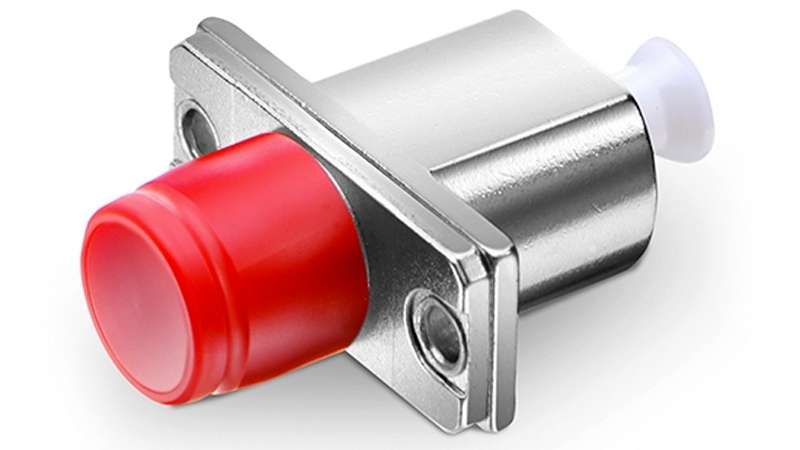The Future of Fiber Optic Networks: Exploring FC to LC Adapters

Fiber Optic Networks Overview
Fiber optic networks have revolutionized data transmission and communication, offering unparalleled speed and reliability. These networks utilize optic fibers, which are thin strands of glass or plastic that transmit data using light signals. Fiber optic technology enables the transfer of large amounts of information over long distances at incredible speeds.
In this rapidly evolving landscape, FC to LC adapters play a crucial role in ensuring seamless connectivity within fiber optic networks. These adapters bridge the gap between FC (Ferrule Connector) and LC (Lucent Connector) connectors, enabling compatibility and interoperability between different types of connectors. Understanding the applications and benefits of FC to LC adapters is essential for technical professionals, network administrators, and fiber optic enthusiasts who seek to optimize their fiber network infrastructure.
Unveiling FC and LC Connectors
FC Connectors: A Closer Look
FC (Ferrule Connector) connectors are widely used in fiber optic networks due to their secure connections, durability, and reliability. These connectors feature a threaded design that ensures a tight connection, minimizing the risk of signal loss or interference. FC connectors are commonly found in telecommunications, data centers, and industrial applications.
The FC connector's robust construction makes it suitable for harsh environments where protection against dust, moisture, and vibration is crucial. It utilizes a ceramic ferrule to align the fiber cores precisely, ensuring optimal signal transmission. The FC connector is known for its excellent return loss performance and low insertion loss.
Understanding LC Connectors
LC (Lucent Connector) connectors are small form-factor connectors that offer high-density connections. They have become increasingly popular in data centers and high-speed networking applications due to their compact size and superior performance. The LC connector features a push-pull latching mechanism that allows for easy insertion and removal.
The LC connector's small size enables greater port density on networking equipment, making it ideal for space-constrained environments. Despite its compact design, the LC connector maintains excellent optical performance with low insertion loss and high return loss characteristics. Its compatibility with single-mode and multimode fibers further enhances its versatility.
When it comes to connecting FC to LC connectors or utilizing different types of fiber optic equipment, FC to LC adapters come into play. These adapters serve as essential components in bridging the gap between different connector types, allowing seamless connectivity within fiber optic networks.

Seamless Connectivity with FC to LC Adapters
The Need for FC to LC Adapters
FC to LC adapters play a crucial role in bridging the gap between FC and LC connectors, enabling seamless connectivity and compatibility between different connector types. In fiber optic networks, it is common to encounter situations where equipment or cables with different connector types need to be connected. This is where FC to LC adapters come in handy.
These adapters act as intermediaries, allowing devices with FC connectors to connect seamlessly with devices using LC connectors. They provide a simple and efficient solution for integrating different generations of fiber optic equipment or transitioning from legacy FC systems to modern LC-based infrastructure.
Benefits and Advantages
FC to LC adapters offer several benefits that contribute to the flexibility and cost-effectiveness of network design and upgrades. One significant advantage is their ability to simplify installations by eliminating the need for cable reterminations. Instead of replacing an entire cable assembly, which can be time-consuming and costly, an adapter can be used to convert the existing connector type.
Additionally, FC to LC adapters provide flexibility in network design by allowing different types of equipment with varying connector requirements to be interconnected. This versatility enables network administrators to make changes or upgrades without the need for extensive rewiring or equipment replacement.
The use of FC-LC converters also reduces costs associated with maintaining multiple types of cables and connectors. By utilizing adapters, organizations can standardize their fiber optic infrastructure on a single connector type while still accommodating legacy systems or equipment that use different connectors.
In summary, FC to LC adapters are essential components in ensuring seamless connectivity within fiber optic networks. They address the need for compatibility between different connector types and offer benefits such as simplified installations, flexibility in network design, and cost reduction.
Exploring the Applications and Benefits
Applications in Fiber Optic Networks
FC to LC adapters find wide-ranging applications in various sectors of fiber optic networks. One prominent area is telecommunications, where these adapters are utilized to connect different types of equipment and ensure seamless communication. They enable the integration of FC and LC connectors, allowing for efficient data transmission across the network.
Data centers also heavily rely on FC to LC adapters due to their compatibility with different generations of fiber optic equipment. These adapters facilitate smooth migration from legacy FC systems to modern LC-based infrastructure, enabling data centers to upgrade their networks without significant disruptions or costly replacements.
Enterprise networks benefit from the versatility of FC to LC adapters as well. They provide a cost-effective solution for connecting devices with different connector types, such as switches, routers, and servers. This flexibility allows organizations to optimize their network design while maintaining compatibility between various components.
Compatibility and Interoperability
One of the key advantages of FC to LC adapters is their ability to ensure compatibility between different generations of fiber optic equipment. As technology evolves, older systems using FC connectors can seamlessly integrate with newer infrastructure utilizing LC connectors through the use of these adapters. This compatibility ensures that investments made in existing equipment are not rendered obsolete when transitioning or upgrading network components.
Moreover, FC to LC adapters enable interoperability between FC and LC connectors. They act as intermediaries that bridge the gap between these two connector types, facilitating seamless integration within fiber optic networks. This interoperability allows for greater flexibility in designing network architectures and simplifies the process of adding or replacing components without requiring extensive rewiring or reconfiguration.
In summary, FC to LC adapters have diverse applications in telecommunications, data centers, and enterprise networks. Their ability to ensure compatibility and interoperability makes them indispensable components in modern fiber optic networks.

The Future of FC to LC Adapters
Advancements in FC to LC Adapter Technology
The field of FC to LC adapter technology is continuously evolving, driven by ongoing research and development efforts. These advancements aim to enhance the performance and efficiency of FC to LC adapters, further improving their capabilities within fiber optic networks.
One area of focus for future developments is miniaturization. As technology progresses, there is a growing demand for smaller and more compact components. Miniaturized FC to LC adapters would allow for greater space efficiency in network equipment and installations, enabling higher port densities without compromising performance.
Another aspect that researchers are exploring is the ability of FC to LC adapters to support higher data rates. With the increasing demand for faster data transmission speeds, adapters capable of handling higher bandwidths will become essential. Advancements in adapter technology may include improved signal processing capabilities and enhanced materials that can support these higher data rates.
Improved compatibility is also a key area of interest for future FC to LC adapter development. As fiber optic networks continue to evolve, ensuring compatibility between different generations of equipment becomes crucial. Future adapters may incorporate features that enable seamless integration with various connector types, making it easier for network administrators to upgrade or expand their infrastructure without compatibility concerns.
In summary, the future of FC to LC adapters holds promising advancements in miniaturization, higher data rates, and improved compatibility. These developments will contribute to the overall efficiency and effectiveness of fiber optic networks as they continue to evolve and meet the ever-increasing demands for faster and more reliable data transmission.
Advancing Fiber Optic Networks
FC to LC adapters are essential components in the future of fiber optic networks. Their ability to provide seamless connectivity and compatibility between different connector types enables efficient data transmission and communication within these networks. As technology continues to evolve, staying updated with advancements in FC to LC adapter technology is crucial for network professionals and enthusiasts. By keeping abreast of the latest developments, they can ensure optimal performance, maximize network efficiency, and adapt to the ever-changing demands of fiber optic networks.
See Also
The Future of Fiber Optic Splice Closures: Exploring the 24 Core Configuration
The Future of SC APC Fiber Optic Cables: Advantages, Applications, and Installation
Demystifying LC-E2000 Fiber Optic Cables: Everything You Need to Know
Boost Network Performance with Multimode OM4 MPO to MPO Fiber Trunk Cable
Enhancing Fiber Preconnection Solutions with Precon Optic Fastconnect MPO Breakout Cable Assemblies
About US
Follow Us
AnetFiber company's main products are indoor and outdoor optical fiber cables, outdoor waterproof pre-connected fiber-to-the-home products, PLC optical fiber splitters, optical fiber jumpers and pigtails, MTP®/MPO high-density big data product solutions, optical fiber field quick connectors and research and development molding, injection molding and production of optical fiber distribution boxes, optical fiber chassis cabinets, the market has expanded to the world, Europe, America, Asia, the Middle East and Latin America.
Address
Shenzhen City, Baoan District, Yanluo Street, Tangxiayong Community, Yangyong Industrial Road, Tonggangda New Energy Vehicle Park 406
Contacts
+86 199 2655 3586

